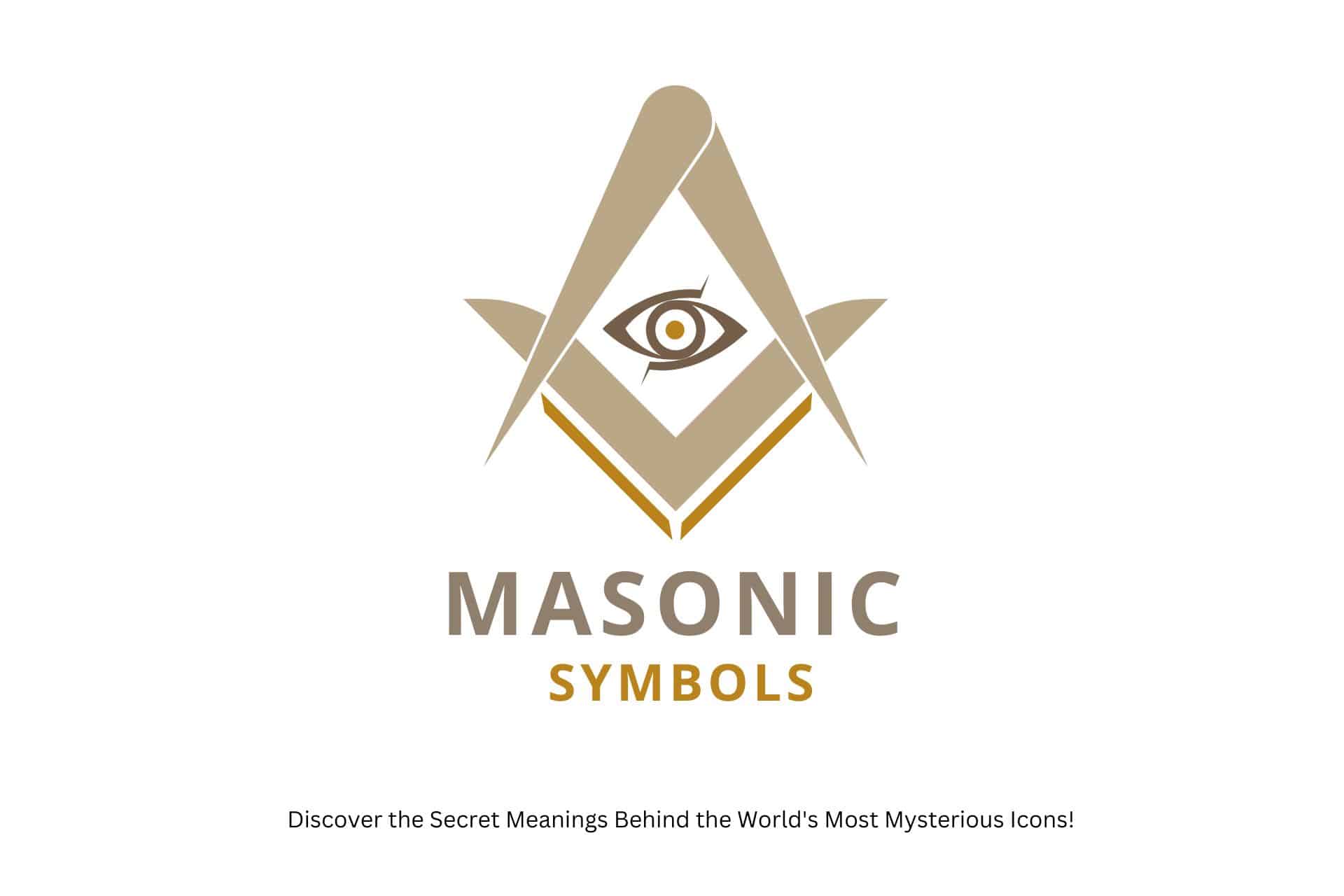Unlock the Hidden Meanings of How Scientific Symbols Shape Our Understanding of the Universe!
Are you curious about the hidden language of science and the symbols that unlock the mysteries of the universe?
This article is your key to deciphering the world of scientific symbols, comprehensively exploring their history, significance, and how they connect us globally.
Discover the fascinating stories behind the symbols you encounter in science class, research papers, or popular science articles.
Arm yourself with knowledge and share in the universal language of discovery.
Continue reading to uncover the secrets behind scientific symbols and how they shape our understanding of the world.
Let’s get started!

Here’s What You Will Find

Key Takeaways
Scientific Symbols
Universal Language of Science: Scientific symbols are universal, allowing scientists and learners worldwide to communicate complex ideas succinctly across different languages and cultures. This universality facilitates global collaboration and advances in science.
Diverse Applications: Each scientific discipline, from chemistry to astronomy, employs its own set of symbols to represent elements, processes, constants, and units, demonstrating the vast range and applicability of these symbols in understanding the natural world.
Historical Evolution: The symbols we use today result from centuries of evolution, reflecting the collective contributions of many cultures to scientific knowledge. This historical depth adds richness and context to our understanding of scientific concepts.
Gateway to Discovery: Learning and understanding scientific symbols is not just for experts; it’s a gateway for anyone interested in exploring the mysteries of the universe. By demystifying these symbols, we can inspire curiosity, enhance science literacy, and encourage participation in the scientific conversation.
What are Scientific Symbols?
A scientific symbol is a concise, standardized notation representing a specific concept, element, compound, process, or unit in science.
These symbols are a universal language, enabling scientists, researchers, and students across the globe to communicate complex ideas efficiently and accurately, regardless of their spoken language.
Scientific symbols can range from simple letters or combinations of letters (such as “H” for hydrogen or “Na” for sodium) to more complex diagrams or mathematical notations (like the symbol for pi, π, or the symbol for the speed of light, c).
Scientific symbols are the shorthand of science, the alphabets of a language developed over centuries. These symbols, from simple letters and numbers to more intricate diagrams, concisely represent complex scientific concepts and entities. The beauty of these symbols lies in their universality.

Regardless of one’s native language, the symbols for elements like hydrogen (H), or the speed of light (c), remain constant, fostering global communication and collaboration in the scientific community.
Symbols are widespread across various scientific disciplines, including chemistry, physics, biology, astronomy, and mathematics. Each discipline has developed its own symbols over centuries.
These symbols concisely represent chemical elements, physical constants, units of measurement, mathematical operations, and much more.
Standardizing scientific symbols is crucial for promoting clear and consistent communication in scientific discourse, education, and research, facilitating collaboration, and advancing knowledge worldwide.
Types of Scientific Symbols
What are the symbols of science?
In the universe of scientific exploration, symbols act as shorthand notations that encapsulate complex concepts, processes, and materials.
Each category of scientific symbols plays a critical role in its respective field, making the vast world of science more accessible and understandable.
Below, we explore the primary categories of scientific symbols, providing a snapshot of their purpose and significance and illustrative examples for clarity.
Chemical Symbols: The Language of Chemistry
Chemical symbols are the alphabet of chemistry. They offer a concise and universal way to represent chemical elements and compounds.
This system allows chemists worldwide to communicate complex information succinctly, regardless of language. The symbol H₂O, representing water, is a perfect example, where ‘H’ stands for hydrogen, ‘O’ for oxygen, and the subscript ‘₂’ indicates that two hydrogen atoms are bonded to one oxygen atom.
This standardized notation is crucial for understanding and conducting chemical reactions, teaching chemistry, and discussing chemical properties in research and industry.
Mathematical Symbols: The Vocabulary of Mathematics
Mathematical symbols are the foundation for expressing mathematical ideas, operations, equations, and relationships. They are the universal language of mathematics, enabling the concise communication of complex mathematical concepts. The symbol π (Pi) is iconic, representing the ratio of a circle’s circumference to its diameter.
This constant is fundamental to geometry, trigonometry, and calculus. It illustrates how mathematical symbols encapsulate vast amounts of mathematical knowledge and history, allowing for efficient learning and discovery in the field.
Physics Symbols: The Constants of the Universe
Physics constants are universally acknowledged values that remain invariant across the cosmos. They are essential for formulating physical laws and theories.
The speed of light in a vacuum, denoted by the symbol c, is a fundamental constant crucial for understanding the nature of light, space, and time. It underpins the theory of relativity and numerous physics equations, highlighting the role of physical constants in providing a consistent framework for exploring and understanding the universe.
Units of Measurement: Standardizing Quantities
Units of measurement are essential symbols used to quantify physical properties such as length, mass, time, and temperature. The kilogram (kg), the base unit of mass in the International System of Units (SI), exemplifies the role of standardized symbols in science, industry, and daily life.
These symbols ensure precise communication, measurement, and analysis across various fields and facilitate international trade, scientific research, and technology development.
Biological Symbols: Decoding Life
Biological symbols are employed in biology and genetics to represent living organisms’ complex components and processes. Symbols such as XY and XX denote the male and female chromosomes in humans, respectively, providing insights into genetic makeup, inheritance, and biological diversity.
These symbols enable biologists and geneticists to communicate findings, theories, and research efficiently, contributing to advances in medicine, genetics, and our understanding of life.
Astronomical Symbols: Charting the Cosmos
Astronomical symbols represent celestial bodies, astronomical events, and elements of space exploration. The symbol for the Sun (☉) captures the essence of our solar system’s central star.
Astronomical symbols help astronomers, educators, and enthusiasts communicate about objects and phenomena in the universe, facilitating research, navigation, and disseminating astronomical knowledge.
Electrical Symbols: The Circuitry of Innovation
Electrical symbols depict components and their functions within electrical circuits in electrical engineering and physics. A resistor, for instance, is represented by a series of zigzag lines, indicating its role in resisting electrical flow. These symbols are vital for designing, analyzing, and understanding electrical circuits and systems, and they underpin advancements in technology, communications, and power distribution.
Quantum Mechanics Symbols: Unlocking the Quantum World
Quantum mechanics symbols represent the particles, wave functions, and quantum states central to the theory. The wave function (Ψ), a core concept, illustrates the probability amplitude of a particle’s state in a quantum system. These symbols are crucial for conveying the principles and findings of quantum mechanics, a field at the forefront of exploring the fundamental nature of reality.
Environmental Symbols: Advocating for Sustainability
Environmental symbols, such as the recycling symbol, represent ecological conservation and sustainability efforts. They raise awareness, encourage sustainable practices, and communicate important information about environmental conditions and phenomena. Thus, they play a crucial role in global efforts to protect and preserve the environment for future generations.
Medical Symbols: The Signs of Health
Medical symbols communicate information related to health, diseases, treatments, and medical practices. The Rod of Asclepius, a serpent entwined around a rod, is a traditional symbol of medicine and healthcare, embodying the principles of healing and care. These symbols are integral to the medical field, effectively communicating medical knowledge, practices, and warnings.
Engineering Symbols: Building the Future
Engineering symbols are employed across disciplines to represent design elements, principles, and processes. A gear symbol might represent mechanical components in mechanical engineering, while a simple bridge symbol could denote civil engineering endeavors.
These symbols are indispensable for conveying complex engineering concepts and designs, ensuring precision and understanding in developing infrastructure, machinery, and technology.
Safety Symbols: Guardians of Well-being
Safety symbols communicate essential warnings and safety information in various contexts, such as laboratories, workplaces, and public areas.
For example, the biohazard symbol warns of substances threatening human health or the environment, which is critical in maintaining safety and preventing accidents. These symbols are universally recognized, ensuring a broad audience understands crucial safety messages to protect individuals and communities.
Through this exploration of scientific symbols, we glimpse the rich tapestry of notations that scientists, researchers, and scholars use to navigate and communicate within their fields.
These symbols facilitate scientific discourse and enhance our understanding of the natural world. They embody the essence of discovery and innovation.
What is Scientific Symbolism?
Scientific symbolism refers to using symbols, signs, and notation to represent scientific concepts, phenomena, materials, processes, and measurements concisely and standardized.
Unlike the broader concept of symbolism found in literature, art, or religion, which often imbues symbols with complex and layered meanings subject to interpretation, scientific symbolism is characterized by its precision, universality, and objectivity.
In science, symbols are a universal language transcending linguistic and cultural barriers, allowing scientists and scholars worldwide to communicate complex information efficiently and accurately. This system of representation covers a wide range of disciplines, including:
- Chemistry: The use of elemental symbols (e.g., H for hydrogen, O for oxygen) and molecular formulas (e.g., H₂O for water) to represent chemical substances.
- Physics: This involves using symbols for physical constants (e.g., c for the speed of light), units of measurement (e.g., m for meters, s for seconds), and specific phenomena (e.g., Ω for ohms, resistance).
- Biology: Notation for genetic sequences, species classification, and biological processes.
- Mathematics: Mathematical symbols and operators (e.g., +, -, ×, ÷) and special numbers (e.g., π, e) to express mathematical operations, equations, and constants.
- Astronomy: Symbols for celestial bodies (e.g., ☉ for the Sun, ☽ for the Moon), astronomical events, and space exploration.
Scientific symbolism is crucial for advancing knowledge, facilitating the efficient transmission of information within the scientific community, and teaching and learning scientific concepts in education.
Through this standardized symbolic language, complex ideas can be communicated succinctly, experiments and findings can be accurately described, and the foundational principles of the natural world can be explored and understood.
What is the Universal Symbol of Science?
Due to the vast scope and diversity of scientific disciplines, no universal symbol represents science.
However, certain symbols are widely recognized and associated with science and its pursuit of knowledge. Among these, the most iconic include:
- The Atom: Often used to represent science, particularly physics, the image of an atom with electrons orbiting a nucleus symbolizes the fundamental building blocks of matter and the quest for understanding the physical universe.
- The DNA Double Helix: The double helix symbolizes the field of genetics and biological sciences. It represents the complexity of life and the genetic code that underpins all living organisms.
- The Erlenmeyer Flask: A staple piece of laboratory equipment, the Erlenmeyer flask is frequently used to represent chemistry and scientific research in general. It evokes the idea of experimentation, discovery, and the mixing of chemicals to understand their properties and reactions.
- The Microscope: As a critical tool that has opened up the microcosm of life and matter to human inquiry, the microscope is often used to symbolize the scientific endeavor to observe and understand phenomena beyond the capabilities of the naked eye.
- Mathematical Symbols: Symbols like π (Pi), ∞ (infinity), or the Greek letter Σ (Sigma for sum) are sometimes used to represent the mathematical underpinnings of the sciences, emphasizing mathematics’ role as the language of science.
These symbols, among others, are emblematic of the pursuit of knowledge that defines science. They represent the quest to explore, understand, and explain the natural world through observation, experimentation, and reasoning.
While no single symbol can capture the full breadth and depth of science, these icons collectively reflect the essence of scientific inquiry and the impact of science on human understanding and progress.
The Evolution of Scientific Symbols: A Historical Perspective
The evolution of scientific symbols is a fascinating journey through the history of human knowledge. From the mystical symbols of alchemy to the precise notations of modern science, these symbols have transformed our understanding of the natural world. Each era has contributed its own symbols and notations, reflecting the prevailing theories and technologies of the time.
The development of scientific symbols has been marked by a constant effort to standardize and simplify notation, which has made scientific communication more efficient and accessible.
This evolution is not just a technical advancement but also a cultural and philosophical one, as symbols reflect the changing ways in which humanity perceives and interacts with the natural world.
In many ways, the history of scientific symbols is the history of science itself, showcasing our relentless pursuit of knowledge and understanding.
The Impact of Scientific Symbols in Modern Technology
In the digital age, scientific symbols have found new life in technology. From the binary code that powers our computers to the circuit diagrams that map electrical systems, symbols are integral to modern technologies’ design, development, and operation.
They allow engineers and scientists to conceptualize complex systems, communicate ideas, and solve problems quickly and efficiently.
Scientific symbols’ influence extends beyond the laboratory into everyday life, shaping the technologies that define our contemporary world. From smartphones to satellites, scientific symbols are the building blocks of innovation, driving advances in computing, telecommunications, energy, and transportation.
The symbiotic relationship between scientific symbols and technology highlights the transformative power of these symbols in shaping the future.
Symbols in Scientific Communication: Bridging the Gap
Scientific symbols are more than tools for researchers; they are the bridge connecting the scientific community with the broader public.
Symbols convey complex ideas clearly and concisely in scientific publications, presentations, and educational materials, making science more accessible to a wider audience.
This democratization of knowledge is essential for fostering a scientifically literate society capable of making informed decisions about health care and climate change.
Using symbols in scientific communication also facilitates international collaboration, transcending language barriers and cultural differences.
As humanity’s challenges become increasingly global, the ability to communicate effectively through symbols becomes ever more critical. In this sense, scientific symbols are not just a language of science but a language of global cooperation and progress.
The Art and Science of Symbol Design
The design of scientific symbols is both an art and a science, requiring a delicate balance between simplicity and specificity. A well-designed symbol must be easily recognizable, universally understandable, and capable of conveying complex information at a glance.
This challenge is compounded by the need for symbols that can adapt to different contexts and cultures, ensuring their relevance and utility across the scientific community.
The principles behind symbol design draw on cognitive psychology, semiotics, and graphic design, blending aesthetics with functionality.
The process involves the scientific community, educators, designers, and the public, ensuring that symbols are effective communication tools.
The art of symbol design is a testament to the creativity and ingenuity of those who seek to make science more accessible and engaging for all.
Navigating the World of Scientific Symbols: Tips for Beginners
Venturing into the world of scientific symbols can initially appear overwhelming, given the extensive range of notations and diagrams employed across various scientific disciplines.
Yet, the journey to mastering these symbols is not only enriching but also pivotal for gaining a more profound comprehension of the natural world around us.
Here are some practical tips to ease your initiation into the fascinating world of scientific symbols:
- Start with the Basics: Concentrate on learning the symbols most pertinent to your interests or study area. This focused approach helps build a solid foundation, making it easier to assimilate more complex symbols later on.
- Utilize Educational Resources: Take advantage of the wealth of resources available. Textbooks, online tutorials, and interactive apps offer structured pathways for learning scientific symbols effectively.
- Engage with the Scientific Community: Immersing yourself in forums and social media platforms and attending conferences can enhance your learning experience. Interaction with peers and experts provides unique insights and encouragement.
- Adopt a Continuous Learning Mindset: Embrace the idea that learning scientific symbols is an ongoing journey. Each new symbol not only enriches your knowledge but also brings you one step closer to unraveling the mysteries of the universe.
By following these tips, beginners can confidently navigate the world of scientific symbols, steadily building their understanding and appreciation for this universal language of science.
The Cultural and Philosophical Significance of Scientific Symbols
Beyond their practical utility, scientific symbols carry deep cultural and philosophical significance. They represent humanity’s quest for knowledge and our desire to understand the universe and our place. Symbols like E=mc^2 or the DNA double helix have transcended their scientific origins to become icons of human achievement and curiosity.
The cultural impact of scientific symbols is evident in their presence in art, literature, and popular culture, where they often symbolize innovation, exploration, and the power of human intellect.
Philosophically, these symbols challenge us to consider the nature of reality, human understanding limits, and scientific discovery’s ethical implications. In this way, scientific symbols are not just tools of communication but reflections of our collective aspirations and values.
Engaging with Scientific Symbols
Understanding scientific symbols is more than an academic exercise; it is a way to engage with the world around us, appreciate the beauty and complexity of the natural world, and participate in the ongoing quest for knowledge. We encourage you to explore the symbols that pique your curiosity, share your discoveries with others, and contribute to the rich tapestry of scientific understanding.
Whether you are a student, educator, researcher, or simply a curious mind, the world of scientific symbols offers endless opportunities for exploration and discovery. By demystifying these symbols, we can all play a part in advancing scientific literacy and fostering a deeper appreciation for the wonders of science.
FAQs: Your Questions Answered
Can I learn scientific symbols independently, or do I need a formal education in science?
While formal education can provide a structured approach to learning scientific symbols, many resources are available for self-learners. Online courses, textbooks, and interactive apps can comprehensively introduce scientific symbols across various disciplines.
Are there universal standards for scientific symbols?
Yes, there are international standards for many scientific symbols, especially in fields like chemistry, physics, and biology. These standards ensure consistency and clarity in scientific communication worldwide.
How do scientific symbols evolve over time?
Scientific symbols evolve in response to advances in knowledge, changes in technology, and the needs of the scientific community. New symbols are introduced as new discoveries are made, while existing symbols may be modified or retired as our understanding deepens.
Can understanding scientific symbols improve my daily life?
Absolutely. A basic understanding of scientific symbols can enhance one’s appreciation of the world, improve one’s critical thinking skills, and enable one to make informed decisions about health, technology, and the environment.
Last Thoughts
Exploring scientific symbols is an endless journey that offers rich rewards for the curious mind. These symbols are more than mere notations; they embody human knowledge and inquiry, representing our deepest questions and most profound discoveries.
By engaging with these symbols, we join a centuries-old tradition of exploration and learning, contributing our own chapter to the story of science.
We invite you to share the knowledge you’ve gained about scientific symbols with others, sparking curiosity and inspiring further exploration.
Together, we can foster a deeper understanding and appreciation for the language of science, embarking on an endless journey of discovery that stretches to the horizons of our imagination and beyond.
Before You Go
If you found this journey through the world of scientific symbols as fascinating as we did, don’t keep it to yourself! Share this article with friends, family, or anyone with a curious mind.
Spreading this knowledge can spark conversations, inspire curiosity, and maybe even ignite a passion for science in someone. By sharing, you contribute to a more scientifically literate society where all can appreciate the wonders and complexities of the universe.
So, go ahead, share away, and spread the awe and wonder of scientific discovery!
More on Scientific Symbols
- Chemical Symbols
- Mathematical Symbols
- Physical Constants
- Units of Measurement
- Biological Symbols
- Astronomical Symbols
- Electrical Symbols
- Quantum Mechanics Symbols
- Environmental Symbols
- Medical Symbols
- Engineering Symbols
- Safety Symbols
More on Symbols
History of Symbols: How Ancient Marks Shape Our Modern World!
From Cave Walls to Emojis—A Journey Through Time Have you ever wondered about the history of symbols? Maybe you’ve wondered about their global variations or how they’ve shaped our world. Prepare to have your curiosity …
Check it Out!Tattoos and Their Secret Powers: How Ink Can Change Your Life!
Exploring the Art, Meaning, and Culture of Ink! Are you intrigued by tattoos? Are you curious about the stories they tell and the intricate details they contain? Look no further. You might be wondering about …
Check it Out!Masonic Symbols Unlocked: Discover the Secret Meanings Behind the World’s Most Mysterious Icons!
The Hidden Powers and Ancient Secrets You Never Knew! Are you intrigued by masonic symbols and their profound meanings? Perhaps you’ve seen the square, compasses, or the all-seeing eye and wondered about their significance? Thankfully, …
Check it Out!Military Insignia: Unlock the Hidden Meanings Behind These Powerful Symbols
From Zero to Hero: Uncover How Military Insignia Define Power and Prestige Are you curious about the meaning behind military insignia or rank emblems? Have you ever wondered about their significance or history? This comprehensive …
Check it Out!More Symbols

















